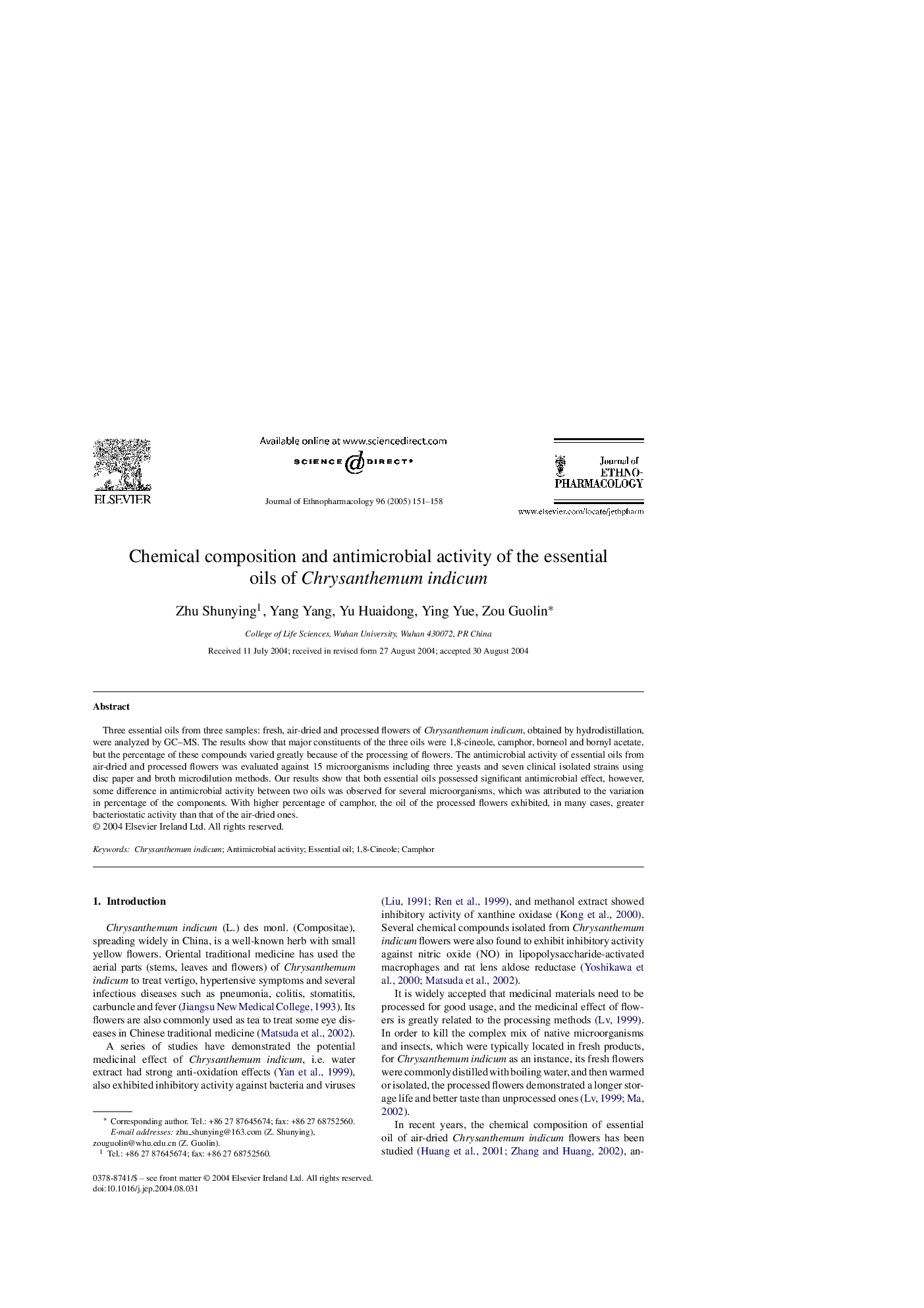| Article ID | Journal | Published Year | Pages | File Type |
|---|---|---|---|---|
| 9009957 | Journal of Ethnopharmacology | 2005 | 8 Pages |
Abstract
Three essential oils from three samples: fresh, air-dried and processed flowers of Chrysanthemum indicum, obtained by hydrodistillation, were analyzed by GC-MS. The results show that major constituents of the three oils were 1,8-cineole, camphor, borneol and bornyl acetate, but the percentage of these compounds varied greatly because of the processing of flowers. The antimicrobial activity of essential oils from air-dried and processed flowers was evaluated against 15 microorganisms including three yeasts and seven clinical isolated strains using disc paper and broth microdilution methods. Our results show that both essential oils possessed significant antimicrobial effect, however, some difference in antimicrobial activity between two oils was observed for several microorganisms, which was attributed to the variation in percentage of the components. With higher percentage of camphor, the oil of the processed flowers exhibited, in many cases, greater bacteriostatic activity than that of the air-dried ones.
Related Topics
Health Sciences
Pharmacology, Toxicology and Pharmaceutical Science
Pharmacology
Authors
Zhu Shunying, Yang Yang, Yu Huaidong, Ying Yue, Zou Guolin,
